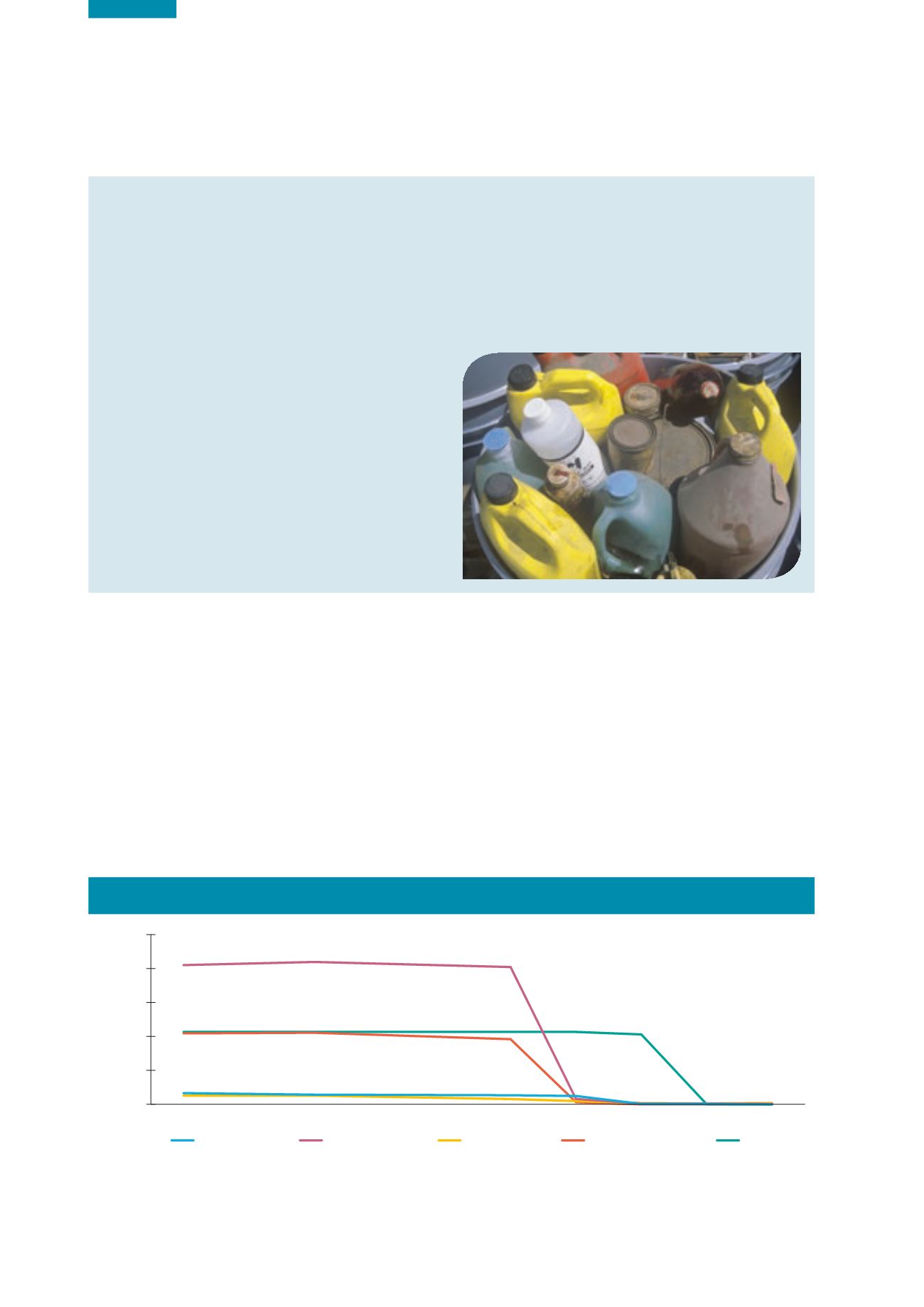

Ireland’s Environment – An Assessment 2016
100
Radioactive Waste Management
A 99% reduction in the national inventory of disused
radioactive sources has been achieved.
The National Inventory Reduction Programme is one of
the programmes prioritised under radioactive waste policy.
Particular focus was given to the inspection of licensees
across the medical, industrial, educational and State sectors
that had not yet disposed of their legacy radioactive waste.
The inspections, in conjunction with other regulatory
initiatives, resulted in a 99% reduction in the national
inventory of disused sources with half-life (
t
½) greater than
10 years between 2010 and 2013 (see Figure 6.10).
A National Radioactive Waste Storage Facility for disused
radioactive sources is to be established. A National
Implementation Committee has been constituted to draw
up a specification and make recommendations on the
siting, management and resourcing of the facility.
Figure 6.10
National Inventory of Disused Sources, 2006‑2015 (Source: EPA)
0
500
1,000
1,500
2,000
2,500
2015
2014
2013
2012
2011
2010
2009
2008
2007
2006
Schools
State Agencies
Industry
Universities
Hospitals
Radioactive Sources (no.)
Farm Hazardous Waste Collection Scheme
The EPA is leading a pilot farm hazardous waste collection programme, which represents the largest ever voluntary
bulk removal of highly toxic pollutants out of the Irish environment in a concentrated period of time. Between 2013
and 2015, 598 tonnes of waste was collected at 26 centres (400 tonnes deemed hazardous). Types of waste collected
included waste oils, batteries, veterinary medicines and sharps, pesticides and WEEE. Over 1 tonne of the pesticides
was classified as persistent organic pollutants (POPs). Many of the POPs collected have been banned for considerable
time and included DDT, lindane (gamma-HCH), dieldrin and endosulfan. These waste pesticides not only pose risks to
human health and the environment, they threaten the very considerable efforts and investments made in recent years
by farmers to enact environmental protection measures
should accidental contamination occur. In the long term,
the establishment of a national farm hazardous waste
collection scheme would support the green and smart
ambitions of the farming industry as well as enabling
farmers to meet their legislative obligations.
Similar schemes supported by the DECLG which
were operated by the local authorities and aimed at
householders were delivered in 2015. There is a case
to be made for household orientated hazardous waste
schemes to be operated on a regional, if not national,
scale so as to achieve efficiencies and effectiveness.


















